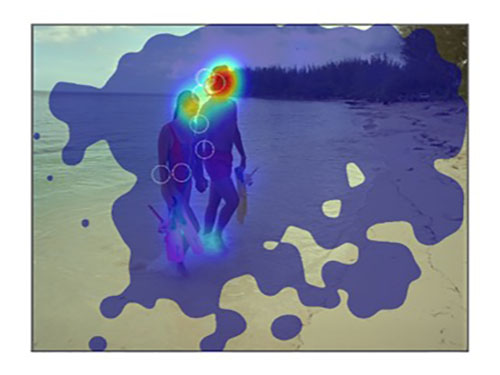Exposure to phthalates, cognitive development, and visual behavior in children

How to measure a child's "visual behavior"?
Around their second year, 151 children from the SEPAGES cohort visited the babylab on the campus of the Université Grenoble Alpes. The visit to the baby lab involved performing oculometry tasks. The child sat on their parents' laps and looked at a screen displaying various visual stimuli. This examination allowed for the collection of precise and quantitative measures of the child's cognitive and social development. These measures complement the data collected through questionnaires in SEPAGES.
Tasks performed at the baby lab, for example, quantify the duration of fixation on objects or faces. This provides insight into the child's attention, which is an important aspect of cognitive development. The examination also allows for studying the time spent observing a new face, providing information about the child's memory and learning abilities.
What pollutants were studied?
Samples of urine collected during pregnancy and at one year of age were used to measure exposure to different phthalates. The significant number of urine samples (42 samples during pregnancy and 7 around one year of age) provides precise exposure assessment to phthalates.
Results
The main results of the study suggest that:
- 1) prenatal exposure to certain phthalates was associated with shorter visual fixation durations in toddlers, particularly in girls;
- 2) postnatal exposure was associated with changes in visual attention and reaction times.
What makes this study innovative?
The novelty of this study lies in the precise evaluation of multiple phthalate exposures and objective measures of neurological development in early childhood. This study also investigates the effect of phthalate exposure on child development at two important periods: during pregnancy and in the first year of life.
What are the next steps?
The research team will continue its investigation into the effect of phthalates on:
- 1) child growth
- 2) biological mechanisms.

Example output data from the scene exploration task
To go further: Matthieu Rolland, Sarah Lyon-Caen, Cathrine Thomsen, Amrit K. Sakhi, Azemira Sabaredzovic, Sam Bayat, Rémy Slama, David Méary, Claire Philippat “Effects of Early Exposure to Phthalates on Cognitive Development and Visual Behavior at 24 Months » Environmental Research, 2023 February
Read the article